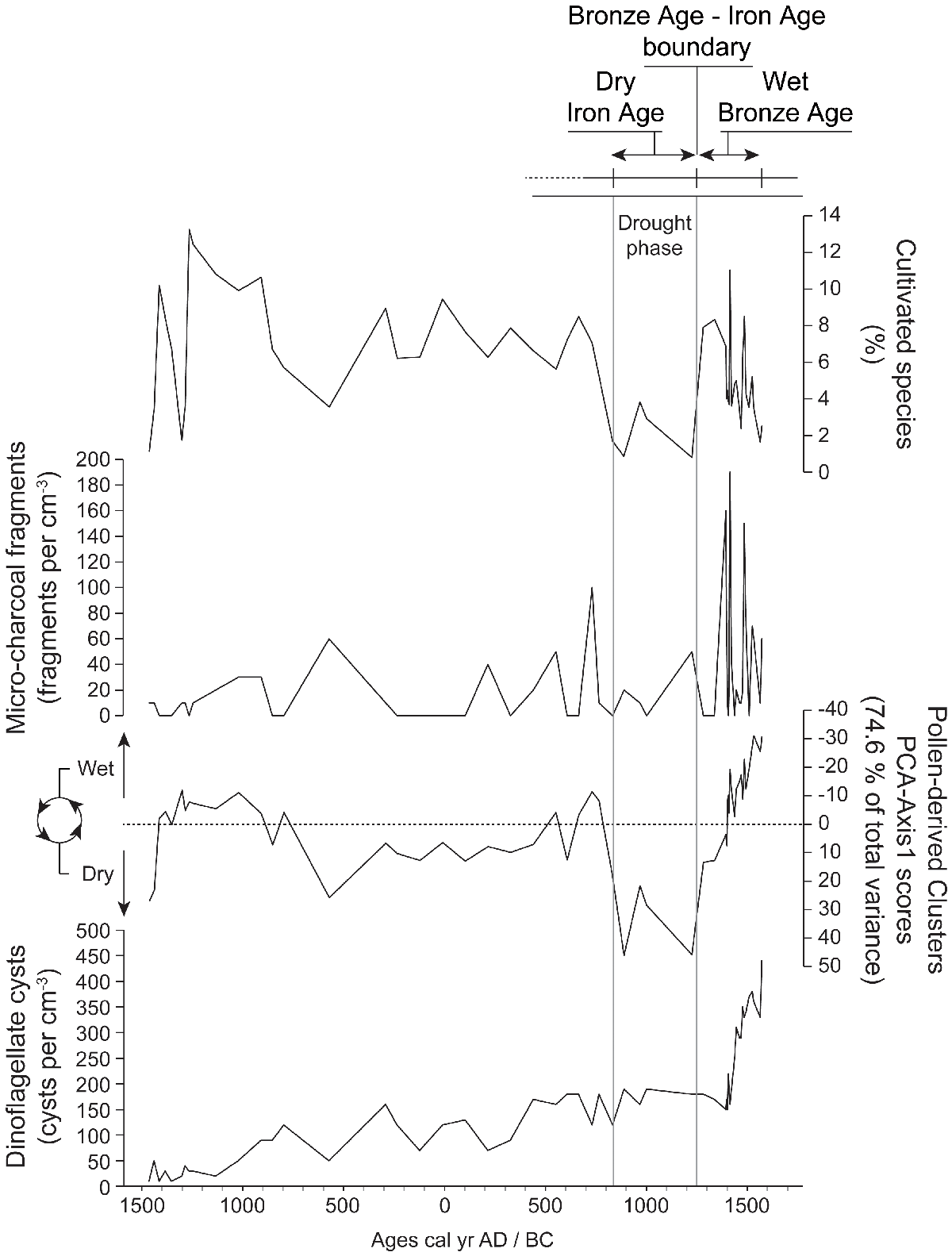Some of the ancient civilizations that flourished in regions of the Eastern Mediterranean - Aegean, Egyptian, Syro-Palestinian, and Hittite civilizations - collapsed during the late Bronze Age.
Hieroglyphic and cuneiform text remains portray invasions of the “Peoples-of-the-Sea” at the Nile Delta, the Turkish coast, and down into the heartlands of Syria and Palestine. Armies clashed, famine-ravaged cities were abandoned, and countrysides were depopulated. Mycenaean, Hittites, Canaanites and Egypt's New Kingdom all suffered dramatic declines.
These Sea Peoples, nomads, are still unknown to us today but a paper says it has cleared up whether the nomadic wars were a cause or an effect of the decline. Efforts to correlate the Late Bronze Age collapse to climate change have been unsuccessful but a group of researchers who studied pollen grains derived from sediments of an ancient lake in the region say they believe that environmental changes towards the end of the 13th century B.C. likely drove this crisis.
Shifts in carbon isotopes in the Eastern Mediterranean and in local plant species suggest that this lake was once a flourishing harbor that gradually dried into a land-locked salt lake.
As a result, crop failures led to famines, repeated invasions by migrants from neighboring regions and eventually, the political and economic collapse of the Eastern Mediterranean civilizations at the end of the late Bronze Age.

The pollen-derived proxy of moisture availability is drawn as PCA-Axis 1 scores (PdVs). The cultivated species, charcoal fragments and dinoflagellate cysts are shown on a linear age-scale. The main climatic event, and the historical-cultural periods are indicated at the top of the diagram. Credit and link: doi:10.1371/journal.pone.0071004
Combining this data with archeological evidence from cuneiform tablets and correspondence between kings, the researchers suggest that the late Bronze Age crisis was a complex, single event comprised of climate change-induced drought, famines, sea-borne invasions and political struggles, rather than a series of unrelated events. They conclude that this event underlines the sensitivity of these agriculture-based societies to climate, and demystifies the crisis that led to their end.
Citation: Citation: David Kaniewski, Elise Van Campo, Sabine Le Burel, Thierry Otto, Joël Guiot, Cecile Baeteman, Environmental Roots of the Late Bronze Age Crisis. PLoS ONE 8(8): e71004. doi:10.1371/journal.pone.0071004


